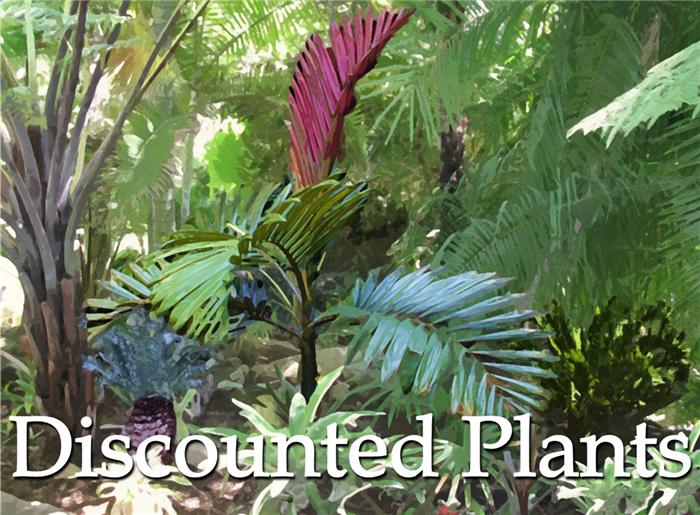Why Choose Fan Palms?
by Phil Bergman
This article explains to the reader the characteristics and unique features of the fan palm. Also discussed are the many types of fan palm trees and reasons why fan palms should be part of every palm enthusiast’s garden.
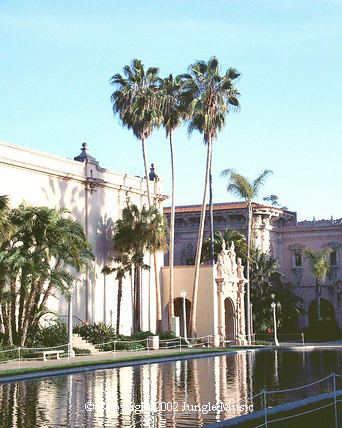
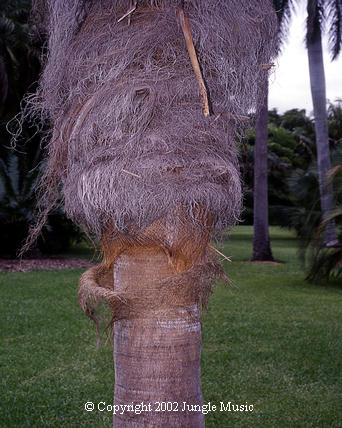
The Dilemma
Over the last four decades as a palm nurseryman, it has not been unusual that I’ve had to convince people to try fan palms. By this I mean that I must tell customers to put in a few fan palms in addition to their feather palms. It is the norm, not the exception, that a customer tells me that he wants a feather palm, not one of those “desert palms”. To be clear, fan palm does not mean the same as a desert palm, but people seem to think this way. About 90% of new hobbyists feel this way. So, what’s going on here? Why the prejudice against a fan palm? Why the funny looks when you even mention it?
First, I must make a confession. I started out growing palms in the mid-seventies feeling the exact same way. I liked the more tropical appearance of pinnate palms, better known as feather palms. Also, when I started collecting palms, I thought that picking out a fan palm meant that you had to select a Washingtonia, Chamaerops, or perhaps a Brahea. And, I saw these palms all over town and they certainly didn’t seem unusual to me; not “rare enough” for my garden! Well, a lot has changed over the past two decades. Now you can obtain and grow fan palms that are indeed tropical and absolutely gorgeous. It is indeed amazing the selection one has in very desirable fan palms. Below I will describe exactly what a fan palm is and explain the reasons not to forget planting fan palms in your garden.
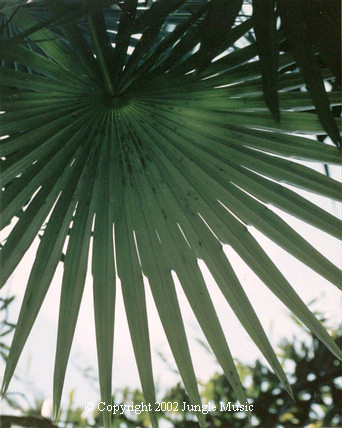
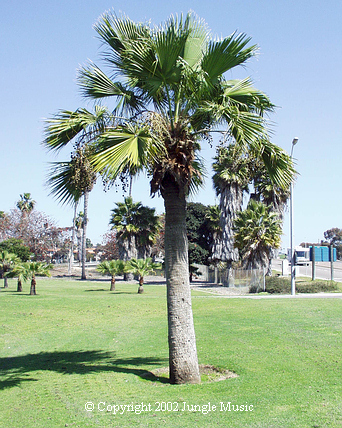

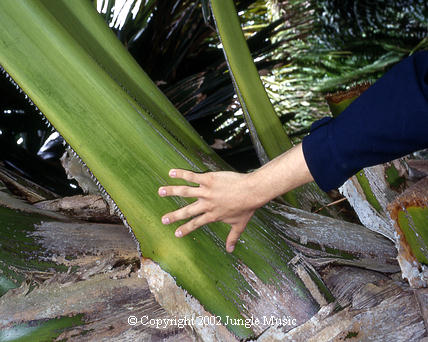
What Type Of Palm Is It?
A palm tree is basically a trunk with leaves emerging from that trunk. There can be one or multiple trunks. The leaves or fronds can come off the trunk all the way from the top to the bottom, or just be at the top of the trunk. The leaves are attached to the trunk by a linear stem called the “petiole“. Where the petiole attaches to the trunk is called the “leaf sheath.” Away from the trunk, the petiole supports leaflets or segments of the leaf. From a structural and appearance point of view, there are three types of leaves: pinnate, fan, and costapalmate.

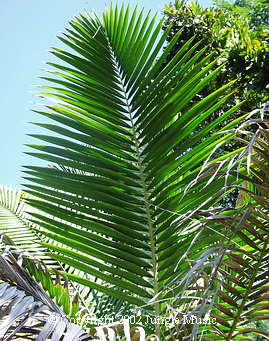
Pinnate Palms
A pinnate leaf has small individual leaflets coming off the petiole. Where they come off, the petiole is called the rachis. Pinnate palms are also known as feather palms, as the leaves looks like the anatomy of a feather. One can consider these leaflets to be divided portions of the entire leaf. It is this type of palm that is typically most popular among palm enthusiasts, especially new ones.
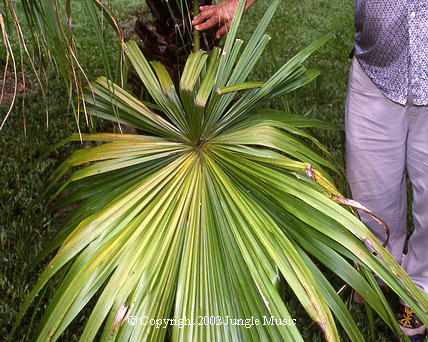
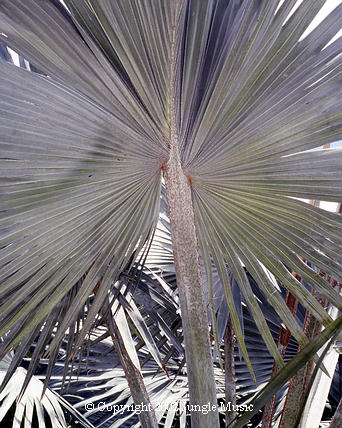
Fan Palms
Fan leaves from the palmate palms are typically circular or paddle shaped, or shaped like a portion of a circle (half moon). The leaf may be divided into segments or entire, without divisions. Most fan palm leaves do have divisions into segments. They can even be severely divided like the spokes of a bicycle wheel, with the air space between the segments extending deep into the central leaf. Rhapis and some Livistona species are examples of this. Or, they can be near complete without divisions or segments. Licuala elegans is an example of this. The individual portions of the fan leaf are known as segments rather than leaflets. The palmate character of the leaf reminds one of his palm and hand, with you fingers being the segments of the leaf (thus the name “palmate” palm). The petiole ends somewhere within the circle of all the segments. This point of attachment may be in the center of the leaf or off to the side of the leaf, depending on the species.

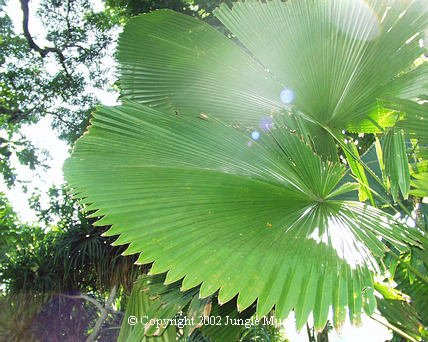
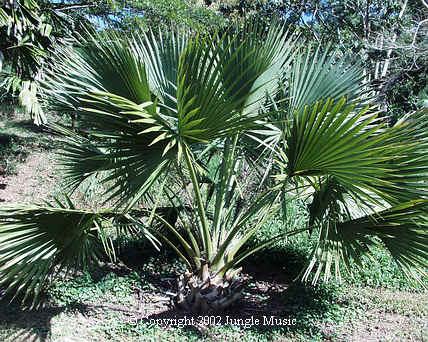
Costapalmate Palms
Intermediate between these two types of leaves are the costapalmate leaves. With these palms, the petiole (rhachis) extends into the structure of the fan leaf. Toward the terminal portion of the leaf, a costapalmate leaf can actually have what appears to be leaflets, although these are actually still segments. They are somewhat between the morphology of a fan and a pinnate leaf. Sabal species are considered costapalmate. For the purpose of this article and in the discussion below, we will consider costapalmate palms as fan palms.
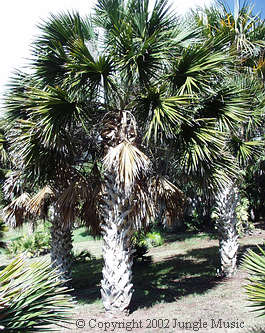

Diversity In The Garden
Now, lets consider the reasons why you should try fan palms in your garden. First, they provide diversity to your palm garden. Fans have a different character, shape, texture, and often color when compared to most pinnate palms. They break up the monotony of vertically streaking pinnate palm trunks. They often add a mid level to your canopy. Their more rounded leaves balance out the long and stretching feather palm leaves. They also come in all shapes and sizes. You can plant small, cute understory Rhapis species, sun loving Coccothrinax and majestic Bismarkias. To be blunt, if all you plant is Kings, Queens, and Pigmy Date Palms, your garden is going to look repetitive and boring.
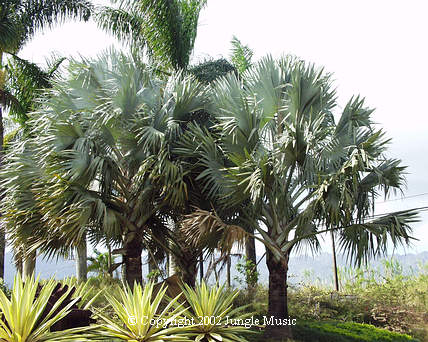
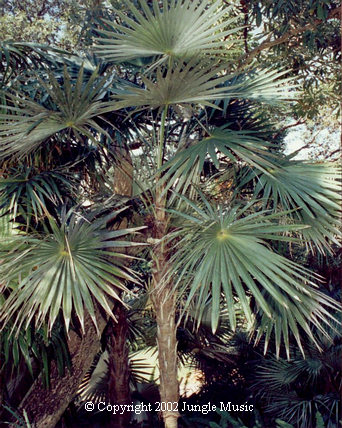
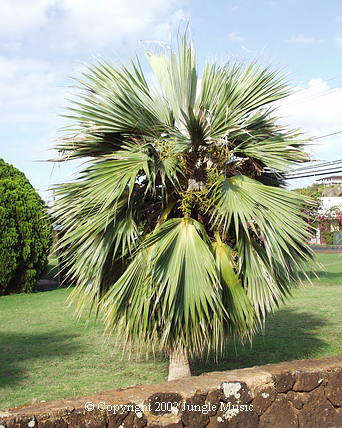
“Tropical Palms”
Fan palms are also, in many cases, just as tropical as pinnate palms. Consider the Borassodendron machadonis with its long, deep green segments in a full swirl; or Coccothrinax argentata with its shiny silver flash from the underside of the leaf; or the majestic Copernicia baileyana with its smooth, stout trunk and towering crown of leaves. All of these are tropical palm species. Do you like big palms? How about the Corypha elata and other Corypha species, where one leaf can cover a Volkswagen bug? Or the Cryosophylla argentata that has the whitest color to the underside of the leaf of any palm around? These two are from tropical parts of the world. Or what about the only species of palms native to the Hawaiian islands? Pritchardias are absolutely gorgeous and as tropical appearing as a Coconut Palm, and a lot rarer.
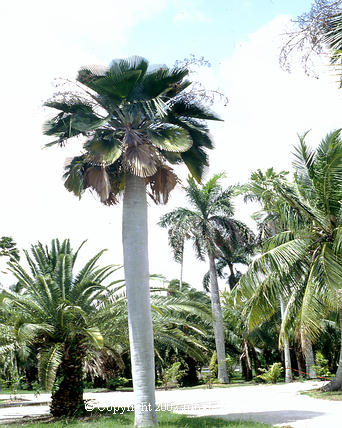
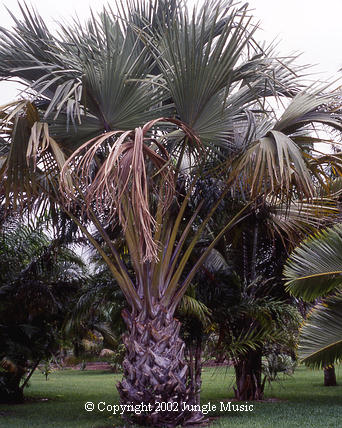
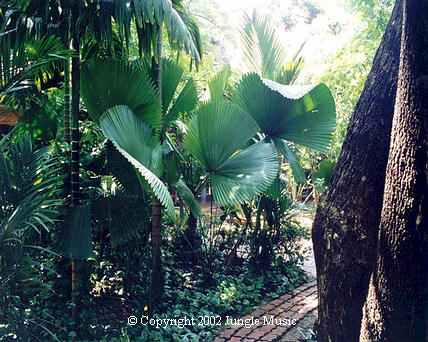
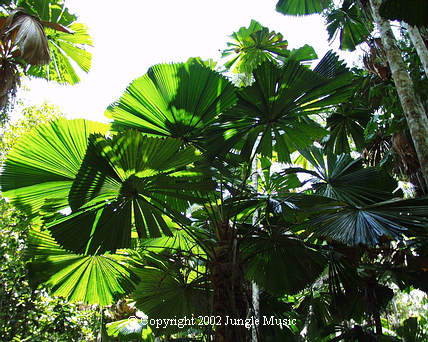
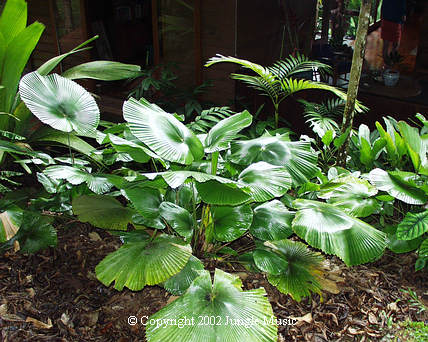
Beauty
Can fan palms be as “beautiful” as a pinnate palm? You bet they can. Some fan palms are considered to be some of the most beautiful palms in the world. The circular plate like appearance of the gorgeous Licuala cordata is breathtaking. The huge flat leaf of Licuala elegans is also a show-stopper. Sabal mauritiformis, when grown in filtered light is a most elegant species, totally unlike the more massive Sabals. Pritchardia martii has a rusty brown underside to its leaves and is just a fascinating and beautiful species. Keriodoxa elegans sport their silver underside beneath a huge flat pleated leaf and black colored petiole. Variegated Rhapis excelsa are so intrinsically beautiful that they adorn the desks of many top executives throughout the Orient. And, the elegant Rhapis humilus adorn the lobbies of many five-star hotels throughout the world. You see, it is in the eye of the beholder. Some people don’t just want another “King Palm look-alike” and appreciate the beauty of the palmate palms.

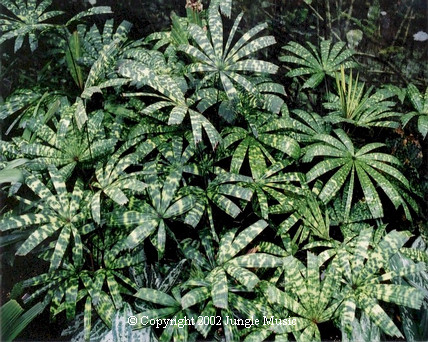

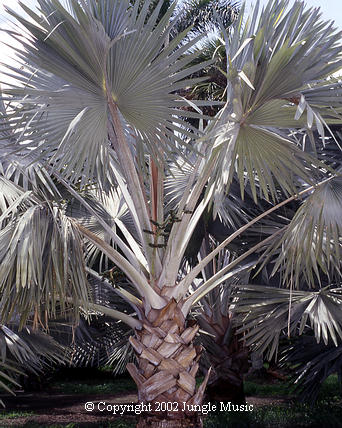
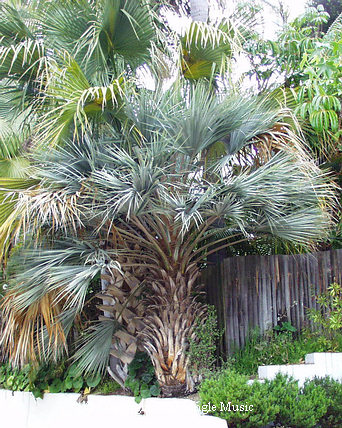
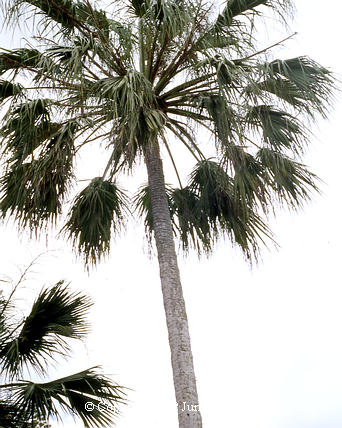
Color In The Garden
Fan palms can also add interesting color to the garden. The magnificent Bismarkia nobilis develops an almost white, cloud-like color to the leaves and is stunning. Brahea armata shows off an almost silver color at times. Sabal uresana is a similar silver color. Nannorrhops ritcheana as well. Pritchardias give plenty of that lush, tropical green color. And, some species of Licuala are mottled or display hieroglyphic markings unlike any pinnate palm. A juvenile Livistona rigida shows off a beautiful red leaf. And the blossoms of Livistona muelleri are a brilliant pink. The seeds of Livistona saribus are extremely bright blue.
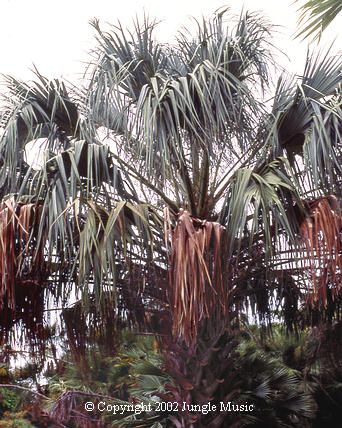

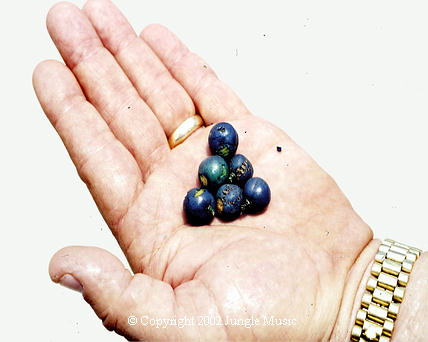
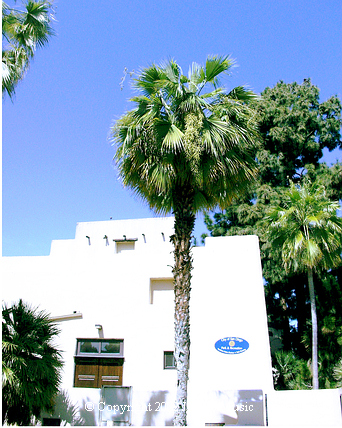

Diversity In Size and Stature
With fans you also see a tremendous diversity in size and stature. Miniature Licualas can adorn your understory plantings, while Brahea brandegii, Washingtonia and Livistona species can tower to the top of the canopy. There are lots of medium sized fan palms that can fit into almost any garden. Coccothrinax crinita , the Old Man Palm, seldom gets over 15 feet in many decades. Pritchardias usually peak out at about 15 to 20 feet in Southern California. There are very stout trunks like with the Washingtonia filifera, which are quite massive at the base. There are thin little trunks like with Rhapis humilis . If you really like unusual, plant a Hyphanae species which will actually branch way above the ground, unique to the palm world.
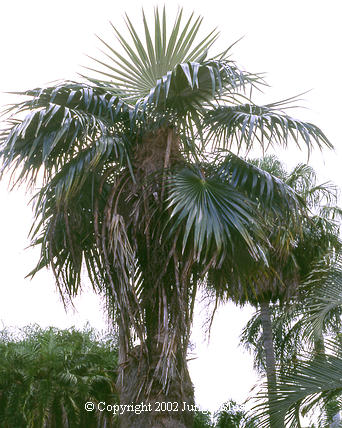
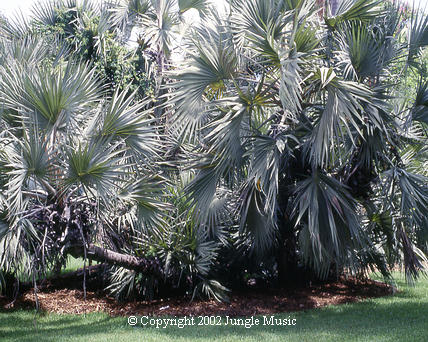
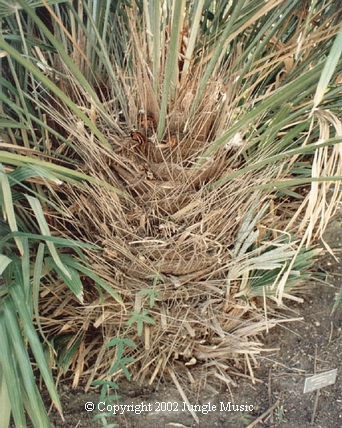

Interesting Trunks
Also, the trunks on fan palms typically are a often more interesting than those of their pinnate cousins. Zombia antillarum hosts suckering trunks with a combination of swirling mat and spirals of spines. Once seen, one typically does not forget the fascination of a Zombia. Coccothrinax crinita trunks look like the hair from the ZZ Top Band. You can almost braid them. Rhapidophyllum hystrix has spines that could be used in blow guns. Latania species seem to have a criss-cross patchwork of old still-attached leaf sheaths and Sabal causarium look like towering tan cigars.
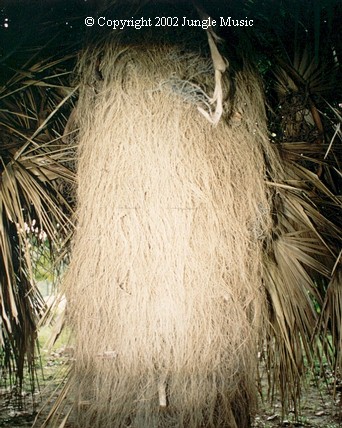
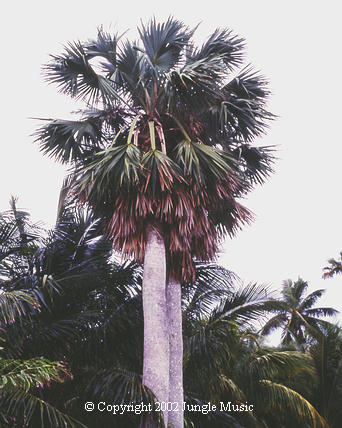
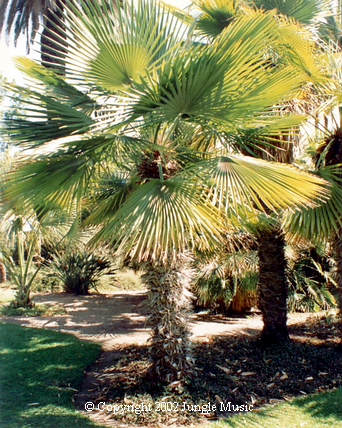
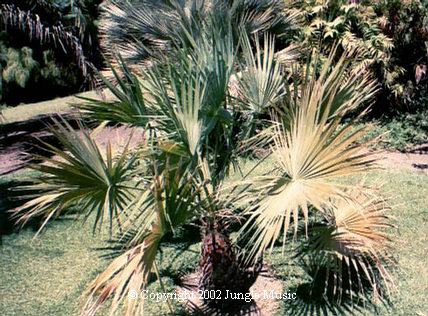
Hardiness To The Elements
And, what about survivability and cold hardiness. Fan palms typically can tolerate a lot more cold than pinnate palms. Rhapidophyllum hystrix can winter out in Salt Lake City and tolerate temperatures below zero Fahrenheit. Trachycarpus can tolerate the cold in some parts of New England. Brahea armata can tolerate the hottest, driest sun in the desert as well as fairly severe cold. For very cold areas, think about planting Braheas, Washingtonia,, Rhapidophyllum, Sabals, Livistona, Trachycarpus, Trithrinax acanthicoma and Nannorrhops. Washingtonia robusta makes a great palm for oceanfront properties. It also attains impressive heights above eighty feet. Also, many fan palms seem to tolerate low levels of watering and are great for xerophytic gardens.

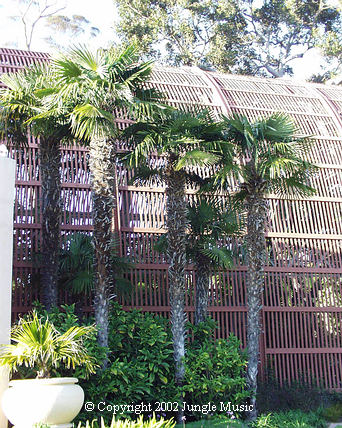

Growth Rate
Most people are of the mind that fan palms are very slow growing. This is correct for many species, incorrect for some. Palms like Brahea decumbens and Copernicia are slow growing. However, Washingtonia robusta can almost keep up with a King Palm. Bismarkias and Pritchardias are not slow at all. A 15 gallon plant of either can be quite large in five to ten years in the ground. Remember, most fan palms don’t get real tall. But, with most species of fan palms, the growth rates are somewhat slow compared to the common pinnate palms.
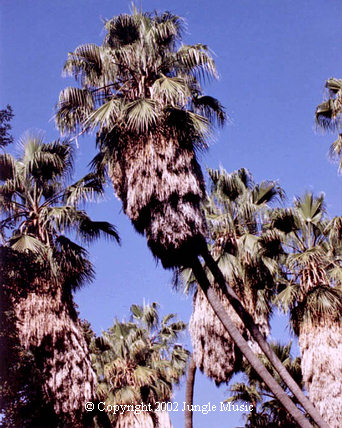
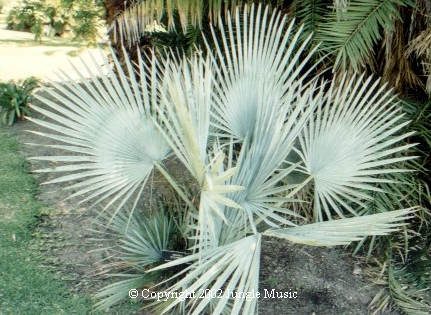
What About Rarity?
And, finally, what about rarity? Some enthusiasts like to search out things that are unusual and not in the usual palm garden. Well, there are fan palms that are unbelievably rare and hard to find. Examples are Brahea decumbens, Itaya amicorum, Keriodoxa elegans, and Borassus. Borassodendron machadonis is not only rare but strikingly dramatic. Photographs of the latter have been used on the dust cover of a major palm book. Copernicia fallaense is beautiful and rare and seldom seen outside of Cuba. I guarantee you that any palm nurseryman worth his salt can come up with fan palm species that you, your neighbors, and no one in your local garden center has ever seen.
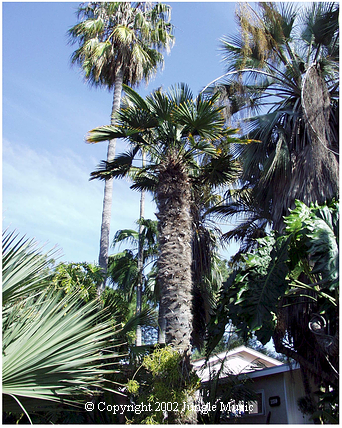
Things To Remember
If now you are convinced that you should try a few fan palms, there are a few very important things to remember. First, as mentioned above, most fan palms are typically slower growing than pinnates. Therefore, if you are a Johny-come-lately sort of guy and plant the fan palms decades after the pinnates, they may never match the stature of the rest of your garden. Therefore, plant your fans in the early years of your garden so they can look mature as the rest of your garden gets large. Also, many fan palms demand full sun. If you plant the world’s “best” domestic collection of King Palms, you might consume all your sun and not have enough left for the fan palms. Most but not all fans want adequate sun. Also remember that faster growing pinnates might shade out adjacent fan palms. Remember this when you plant your garden and protect the sun exposure on the fans. Also, some fan palms want less water. Adjust your watering pattern or sprinklers to give appropriate water to the more drought tolerant fan palms. Also be courageous. We’ve come to understand that there are a lot of interesting fan palms that live in our locality. Give some of the rare ones a try.
So, why choose some fan palms? Because, if you like palms in the first place, you are probably cool and more classy than the next guy. And, cool people do come to love the fan palms as well. Be different. Be a fan and plant one!
(End)
Phil Bergman
Owner and Author
- PALM TREES, CYCADS & TROPICAL PLANT BLOG - October 1, 2020
- TRACHYCARPUS
The Windmill Palm - September 30, 2020 - FAN PALMS –
PALMS WITH CIRCULAR LEAVES - September 29, 2020



